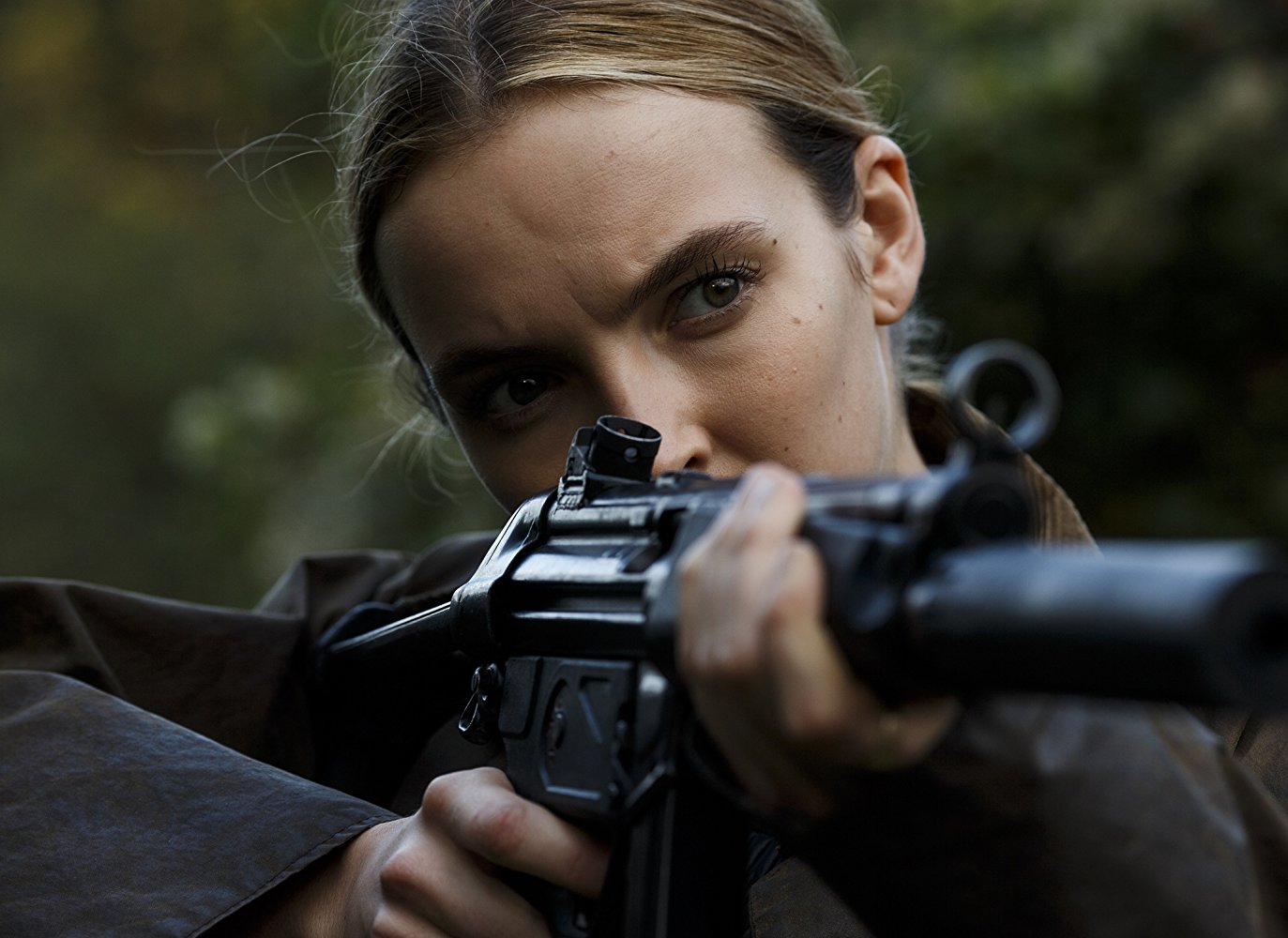 ★★★★
★★★★
“You should never call a psychopath a psychopath. It upsets them.”
 A genuinely organic hit on BBC America, this generated so much word of mouth that the ratings for this show behaved in an unexpected fashion. Including those who DVR’d the show, viewership increased for each episode over its 8-week run. That’s a rare feat these days, and is testament to the show’s unique qualities. So confident were the station in the show, that is was renewed for a second season before it had even premiered – another unusual achievement. But then, this show is arguably unlike anything else on television.
A genuinely organic hit on BBC America, this generated so much word of mouth that the ratings for this show behaved in an unexpected fashion. Including those who DVR’d the show, viewership increased for each episode over its 8-week run. That’s a rare feat these days, and is testament to the show’s unique qualities. So confident were the station in the show, that is was renewed for a second season before it had even premiered – another unusual achievement. But then, this show is arguably unlike anything else on television.
The heroine is Eve Polastri (Oh), an officer in the British intelligence service, MI-5, who believes there’s a connection between a string of assassinations across Europe. She’s right: they were all carried out be Oksana Astankova (Comer), codename “Villanelle”. Oksana is a pure, undiluted psychopath, working for a shadowy Russian organization known as “The Twelve”, under handler Konstantin Vasiliev (Bodnia). Polastri’s career is apparently ended when a witness to one of Oksana’s hits is killed in her care, and she’s fired from MI-5. However, this allows her to be recruited by Carolyn Martens (Shaw) for a off-book investigation into Villanelle.
Eve is therefore able to continue digging into Oksana’s history and activities, but the target becomes aware of the interest – signalling that knowledge by using “Eve Polastri” for her identity during a job. From here, it’s a spiral of increasingly intense cat-and-mouse, with Eve and her team tracking the assassin, while also being hunted by her. It all grows deeply personal for both Eve and Oksana, the two women developing a perverse long-distance relationship that’s more of a fixation, on both sides. Note: I’m not using “perverse” in relation to the homoerotic elements. It’s just… really bizarre. As in, “Villanelle breaking into Eve’s house, in order to have dinner with her” strange.
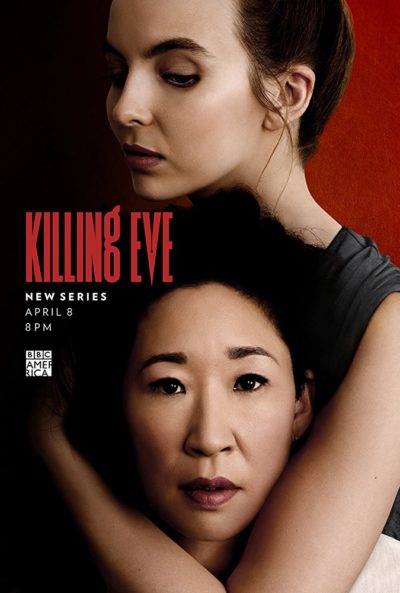 The show is defiantly messy in terms of its characters, who manage both to embody the stereotypes of the dogged law-enforcement official and the slick, femme fatale, while also subverting them. From the viewpoint of this site, Oksana is likely the more interesting. As a high concept, imagine a female version of Dexter: charming and affable on the surface, yet extraordinary lethal – and capable of flicking that switch in a moment. The difference is, Villanelle has chosen not to control and direct her “dark passenger” so much as embrace them fully, and is given the chance to do so by the profession into which she is recruited. It also allows her to indulge her fondness for haute couture.
The show is defiantly messy in terms of its characters, who manage both to embody the stereotypes of the dogged law-enforcement official and the slick, femme fatale, while also subverting them. From the viewpoint of this site, Oksana is likely the more interesting. As a high concept, imagine a female version of Dexter: charming and affable on the surface, yet extraordinary lethal – and capable of flicking that switch in a moment. The difference is, Villanelle has chosen not to control and direct her “dark passenger” so much as embrace them fully, and is given the chance to do so by the profession into which she is recruited. It also allows her to indulge her fondness for haute couture.
She enjoys her work, to an almost scary degree, disdaining the simplest and most directly effective methods, too. That’d be boring, especially for such a free spirit. Why shoot, when you can kill your target by stabbing them in the eye with a hatpin instead? On the other hand, she is also incredibly manipulative. Oksana may not be able to feel any genuine emotions of her own, yet she’s supremely good at faking them, and will happily say what you want to hear, if she thinks it’ll let her use you for her own advantage. Her handler doesn’t so much control the incredibly self-confident Villanelle as unleash her in the direction of the intended target. Who inevitably ends up dead… just not necessarily quite as he would prefer.
The contrast to Eve could hardly be greater, and that perhaps goes some way to explaining the agent’s obsession: Oksana is everything Eve wants to be. Okay, except for the “psychopathic killer” bit. But that’s just a detail, right? For Eve is stuck in a rather tedious relationship, and works a job where her talents are under-used and even less appreciated. The more she learns about her target, the greater the appeal seems to be, and it works both ways: Villanelle wants “someone to watch movies with”. Or says she does anyway: this could just be another manipulative ploy, it’s impossible to be sure. Espionage, counter-espionage and assassination is a murky world at the best of times. Here? You can’t see the murk for the deceit, and at times the lies become a bit overwhelming.
After a long career expressing earnest concern on medical soap Grey’s Anatomy, Oh’s career has undergone a spectacular sea-change of late. First, there was the awesome Catfight, and now this, little if any less successful, which allows Oh to show her remarkable range of expressive… er, expressions [Seriously: you could spend an entire episode just watching her face, to the exclusion of everything else, and still be entranced]. Comer is nowhere near as well-known, but I doubt we’ll see a more memorable female character on television this year than Oksana, combining childish innocence, girlish glee and savage psychopathy. When it comes to Emmy time, it will be a travesty if at least one of them is not nominated – and ideally both. The supporting cast are no slouches either.
I will confess to being less than whelmed by the final episode which, rather than ramping up, petered out into something approaching a slumber party. Admittedly, it’s a very weird one, befitting the show, and sees Eve violate Oksana’s personal bubble of living space, partly in retaliation for the same thing happening to her earlier. But it offers no sense at all of closure: this may be a side-effect of the show having been pre-renewed. I guess there’s no point making any effort to wrap things up, when you know you’re going to be back.
Still, for 7½ episodes, this was far and away the best thing on American TV at the moment. To get one of these amazing characters in a show would have been more than acceptable. Having both in the same series provides a one-two punch of heroine and anti-heroine that’s almost unsurpassed in television history. Buffy and Faith, or Xena and Callisto, perhaps come close – although they were only story arcs. Here, Eve and Oksana are a pure, undiluted focus, and it’s glorious. The second season can’t get here soon enough.
Creator: Phoebe Waller-Bridge
Star: Sandra Oh, Jodie Comer, Fiona Shaw, Kim Bodnia





 I’m unsure who the woman is on the DVD sleeve. I can only presume it’s Lady Not-Appearing-In-This-Film. For what we have instead seems to be a real labour of love for British stunt-woman Cecily Fay. Though calling her a mere stunt-woman would be selling her short: she also wrote, directed, starred in, edited and scored this feature, plus did the fight choreography and sound re-recording, while sewing every sequin on the costumes herself. Okay, the last might be a bit of a stretch, but since she is also credited as the costume designer… perhaps not. Hell, even Robert Rodriguez doesn’t have such a large collection of hats, and this overwhelming multi-tasking might help explain why it took close to five years between the start of filming and its eventual release. The main problem is that Fay’s talents, while considerable, are not equally spread.
I’m unsure who the woman is on the DVD sleeve. I can only presume it’s Lady Not-Appearing-In-This-Film. For what we have instead seems to be a real labour of love for British stunt-woman Cecily Fay. Though calling her a mere stunt-woman would be selling her short: she also wrote, directed, starred in, edited and scored this feature, plus did the fight choreography and sound re-recording, while sewing every sequin on the costumes herself. Okay, the last might be a bit of a stretch, but since she is also credited as the costume designer… perhaps not. Hell, even Robert Rodriguez doesn’t have such a large collection of hats, and this overwhelming multi-tasking might help explain why it took close to five years between the start of filming and its eventual release. The main problem is that Fay’s talents, while considerable, are not equally spread.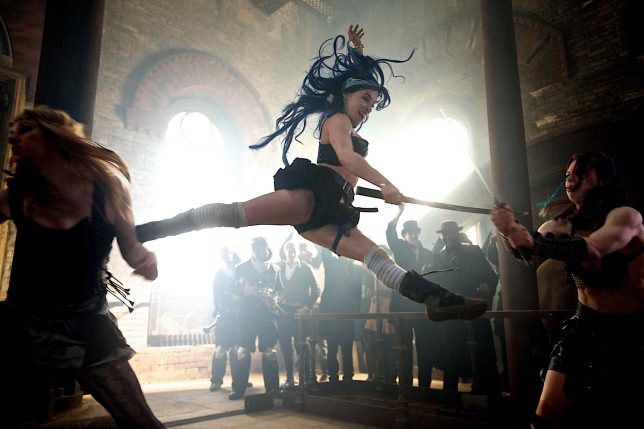 More positively, we have Fay’s acting and directorial talents. The former isn’t much of a surprise, as I enjoyed her performance in
More positively, we have Fay’s acting and directorial talents. The former isn’t much of a surprise, as I enjoyed her performance in 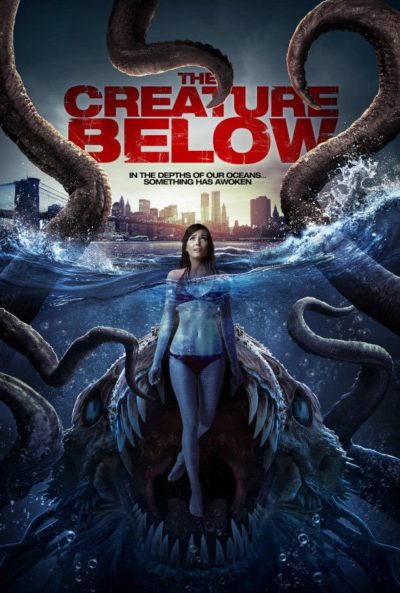 The mad scientist has been a staple of horror/SF for almost 200 years, since Victor Frankenstein first cranked up his machine. The worlds of literature and cinema have frequently returned to it since. A survey showed mad scientists or their creations to be the threat in 30% of horror films over a fifty-year period, and examples from one or other, include Dr. Moreau, Dr. Jekyll, Herbert West, and Rotwang in Metropolis. But they have been almost exclusively male: after Frankenstein, it was 75 years before any comparable female character existed, the title character in George Griffith’s Olga Romanoff, from 1893. They have been rare ever since, with only the occasional entry such as Lady Frankenstein to break male domination.
The mad scientist has been a staple of horror/SF for almost 200 years, since Victor Frankenstein first cranked up his machine. The worlds of literature and cinema have frequently returned to it since. A survey showed mad scientists or their creations to be the threat in 30% of horror films over a fifty-year period, and examples from one or other, include Dr. Moreau, Dr. Jekyll, Herbert West, and Rotwang in Metropolis. But they have been almost exclusively male: after Frankenstein, it was 75 years before any comparable female character existed, the title character in George Griffith’s Olga Romanoff, from 1893. They have been rare ever since, with only the occasional entry such as Lady Frankenstein to break male domination.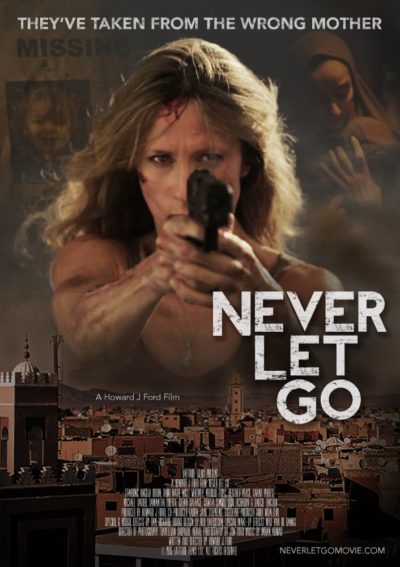 Based on the title and synopsis, I was expecting something like a Lifetime TV Movie. A mother frantically searching for her abducted child in a foreign location, before they can be sold off to some rich Arab, would seem right up their alley. [Though of course, this kind of thing has long been a popular subject for exploitation, to the point where the Hays Code of the thirties had explicitly to ban movies about “white slavery”] It’s a good deal grittier and harder hitting than that, though could have done with much better explanation of why this momma bear is so ferocious – among a number of other aspects.
Based on the title and synopsis, I was expecting something like a Lifetime TV Movie. A mother frantically searching for her abducted child in a foreign location, before they can be sold off to some rich Arab, would seem right up their alley. [Though of course, this kind of thing has long been a popular subject for exploitation, to the point where the Hays Code of the thirties had explicitly to ban movies about “white slavery”] It’s a good deal grittier and harder hitting than that, though could have done with much better explanation of why this momma bear is so ferocious – among a number of other aspects.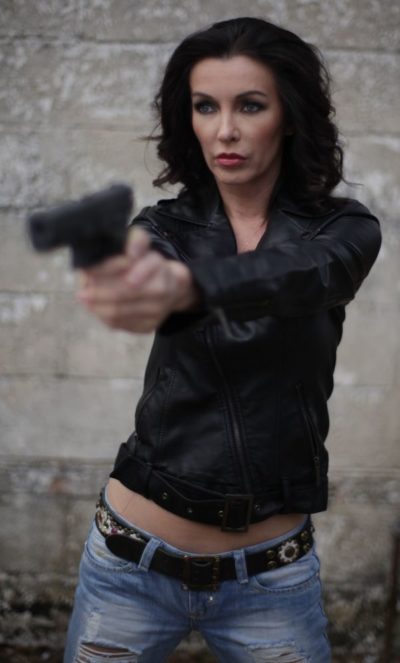 You could call this a foul-mouthed, borderline misogynist, zero budget piece of trash, with no coherent plot, where it seems every other word is a F-bomb or C-missile, and most of the lines are not so much spoken, as yelled. I wouldn’t argue with such an assessment, and understand perfectly why it is rated 1.4 on IMDb. And, yet… It has a relentless and manic energy which makes Crank look like a Merchant-Ivory costume drama. Put another way: unlike the overlong Rogue One, I did not fall asleep here, and it will likely stick in my mind longer than the three other, far more polished productions, which I watched the same day. Probably because, unlike this, they did not have a topless little person being tossed off a roof.
You could call this a foul-mouthed, borderline misogynist, zero budget piece of trash, with no coherent plot, where it seems every other word is a F-bomb or C-missile, and most of the lines are not so much spoken, as yelled. I wouldn’t argue with such an assessment, and understand perfectly why it is rated 1.4 on IMDb. And, yet… It has a relentless and manic energy which makes Crank look like a Merchant-Ivory costume drama. Put another way: unlike the overlong Rogue One, I did not fall asleep here, and it will likely stick in my mind longer than the three other, far more polished productions, which I watched the same day. Probably because, unlike this, they did not have a topless little person being tossed off a roof.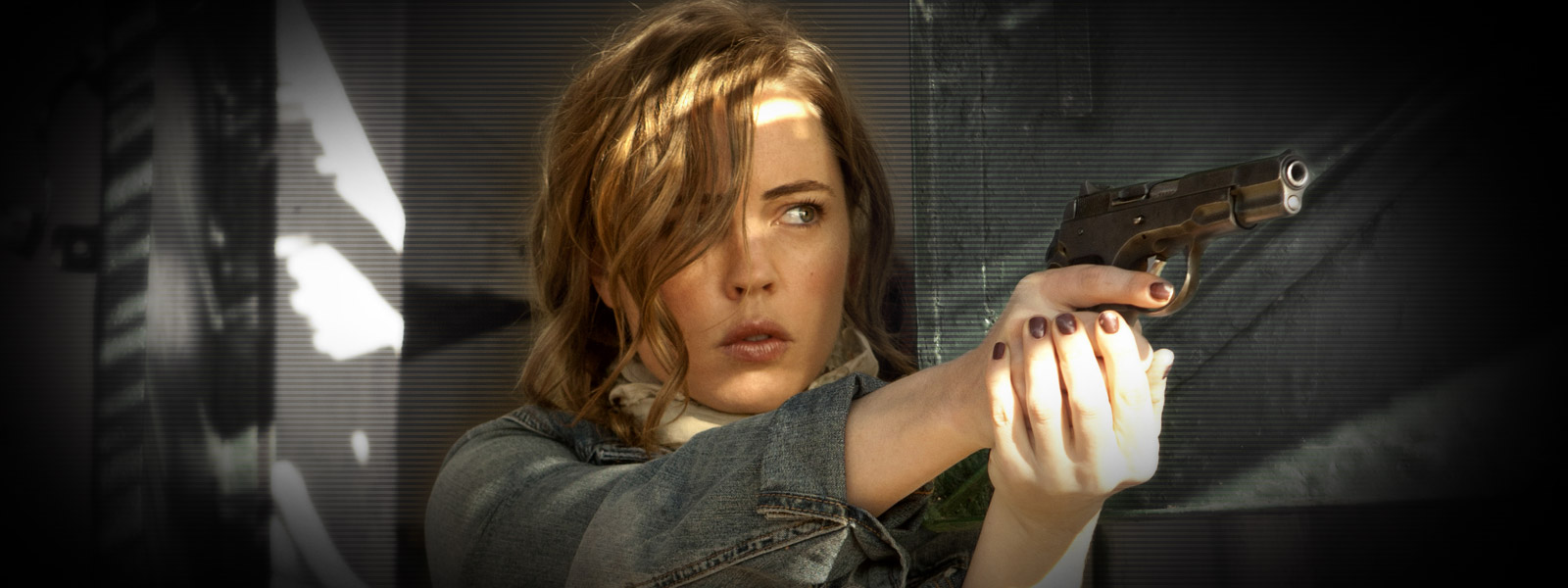 ★★★
★★★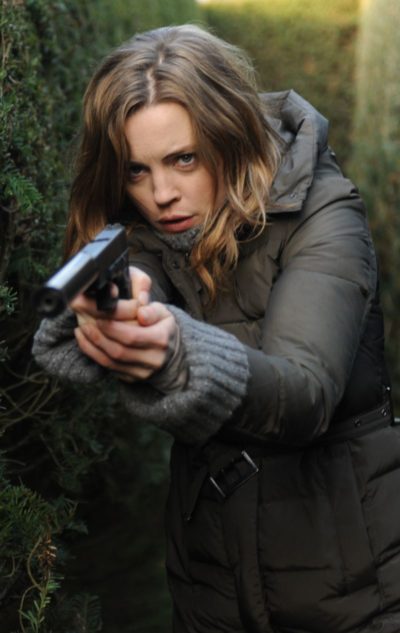 Originally pitched as a vehicle for Gillian Anderson – creator Spotnitz was a head writer on The X-Files – the main problem here is likely a structure which demands a second season the show never received. This seems to have come as a surprise to the creators, since they had put together a writing team and planned out storylines. Then, the show was abruptly not renewed, in response to sagging British ratings (the series lost 30% of its viewers over the eight-week run). Even after the BBC pulled the plug, there were hopes Cinemax would continue the show, as it had sustained its audience much better in the US. Those failed to come to fruition either, and the story of Sam Hunter is left frustratingly incomplete.
Originally pitched as a vehicle for Gillian Anderson – creator Spotnitz was a head writer on The X-Files – the main problem here is likely a structure which demands a second season the show never received. This seems to have come as a surprise to the creators, since they had put together a writing team and planned out storylines. Then, the show was abruptly not renewed, in response to sagging British ratings (the series lost 30% of its viewers over the eight-week run). Even after the BBC pulled the plug, there were hopes Cinemax would continue the show, as it had sustained its audience much better in the US. Those failed to come to fruition either, and the story of Sam Hunter is left frustratingly incomplete.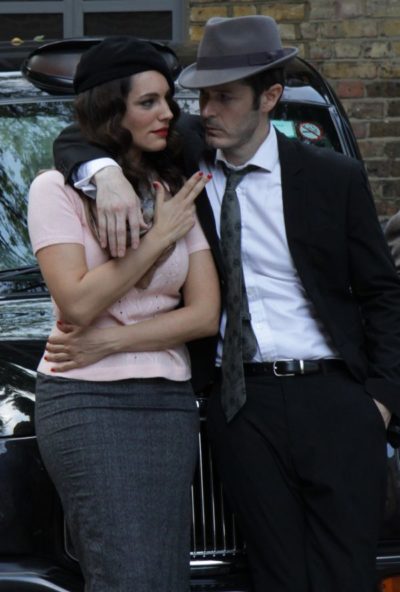 Kate’s (Brook) life has fallen apart: she has just been told the store she works at is closing because the owner is cashing in on a redevelopment offer; her boyfriend has dumped her; and Kate’s attempt at suicide by gas oven is doomed since she failed to pay the bill. What’s a girl to do? The answer is apparently, take inspiration from her heroine, Bonnie Parker. But rather than robbing banks, Kate teams up with her other disgruntled work colleagues, hatching a daring plan to copy the key to the store, seduce the safe combination out of the firm’s accountant, Mat (Williams) and plunder the ill-gotten gains.
Kate’s (Brook) life has fallen apart: she has just been told the store she works at is closing because the owner is cashing in on a redevelopment offer; her boyfriend has dumped her; and Kate’s attempt at suicide by gas oven is doomed since she failed to pay the bill. What’s a girl to do? The answer is apparently, take inspiration from her heroine, Bonnie Parker. But rather than robbing banks, Kate teams up with her other disgruntled work colleagues, hatching a daring plan to copy the key to the store, seduce the safe combination out of the firm’s accountant, Mat (Williams) and plunder the ill-gotten gains. Amy (Theobold) is insane. Or so the rest of society thinks, due to her being able to see things nobody else can. She’s trying to keep her head down, working quietly at a bowling alley. But after being attacked, she is rescued by Raquel (Wokoma), another young woman who can see exactly the same things. Amy learns from her new friend that demons are real, and live among us: Raquel has appointed herself a demon-hunter, and convinces the reluctant Amy to join her. This causes no end of issues, not the least of which is Amy’s room-mate becoming one of the possessed, and the most of which is likely the apocalyptic plan of Callum (Curran). He intends to use Raquel to open the gates of hell on Halloween, allowing thousands more demons to flood into our world and take over humans.
Amy (Theobold) is insane. Or so the rest of society thinks, due to her being able to see things nobody else can. She’s trying to keep her head down, working quietly at a bowling alley. But after being attacked, she is rescued by Raquel (Wokoma), another young woman who can see exactly the same things. Amy learns from her new friend that demons are real, and live among us: Raquel has appointed herself a demon-hunter, and convinces the reluctant Amy to join her. This causes no end of issues, not the least of which is Amy’s room-mate becoming one of the possessed, and the most of which is likely the apocalyptic plan of Callum (Curran). He intends to use Raquel to open the gates of hell on Halloween, allowing thousands more demons to flood into our world and take over humans.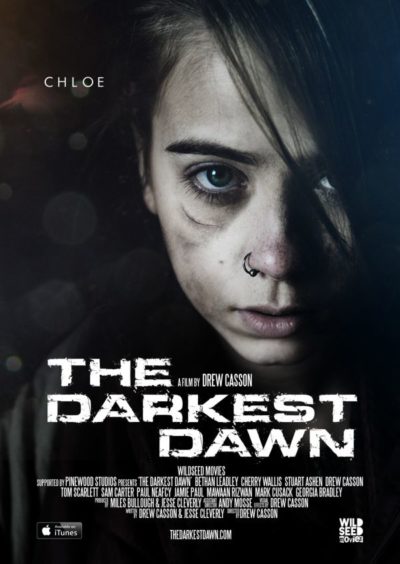 This is apparently a sequel to a previous movie about an alien invasion of Earth (and, specifically, the United Kingdom) from the same director, Hungerford. While I haven’t seen it, this likely didn’t impact things too much here; I sense it’s perhaps closer to a separate story, unfolding in the same universe, than a true sequel. It’s the story of teenage sisters Chloe (Leadley) and Sam (Wallis), with the former getting a video camera for her birthday – just in time for said invasion to kick off, with their family being separated in the ensuing chaos. Toting her camera, Chloe and her sibling take shelter, then scurry through the blasted landscape, facing the threat not just of the extra-terrestrials, but renegade bands of survivors. For it also turns out Chloe, specifically her blood, is a key to the resistance. What are the odds?
This is apparently a sequel to a previous movie about an alien invasion of Earth (and, specifically, the United Kingdom) from the same director, Hungerford. While I haven’t seen it, this likely didn’t impact things too much here; I sense it’s perhaps closer to a separate story, unfolding in the same universe, than a true sequel. It’s the story of teenage sisters Chloe (Leadley) and Sam (Wallis), with the former getting a video camera for her birthday – just in time for said invasion to kick off, with their family being separated in the ensuing chaos. Toting her camera, Chloe and her sibling take shelter, then scurry through the blasted landscape, facing the threat not just of the extra-terrestrials, but renegade bands of survivors. For it also turns out Chloe, specifically her blood, is a key to the resistance. What are the odds? In February 2002, Ingrid Betancourt was travelling through a rural area of Colombia, as part of her campaign in the presidential election for the Green Party. She was stopped at a road-block run by the Marxist rebel organization, FARC, and when they realized who they had, she and her assistant, Clara Rojas, were kidnapped. Betancourt would spent more than six years of jungle captivity with the guerillas, until she was rescued, in a startling piece of deception, by Colombian military forces. This documentary film tells her story, through archive footage and interviews with Betancourt, Rojas, other kidnappees and some of the FARC members.
In February 2002, Ingrid Betancourt was travelling through a rural area of Colombia, as part of her campaign in the presidential election for the Green Party. She was stopped at a road-block run by the Marxist rebel organization, FARC, and when they realized who they had, she and her assistant, Clara Rojas, were kidnapped. Betancourt would spent more than six years of jungle captivity with the guerillas, until she was rescued, in a startling piece of deception, by Colombian military forces. This documentary film tells her story, through archive footage and interviews with Betancourt, Rojas, other kidnappees and some of the FARC members.